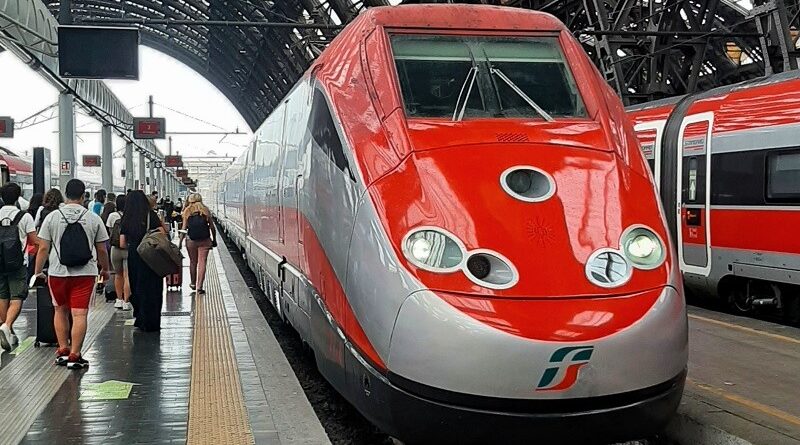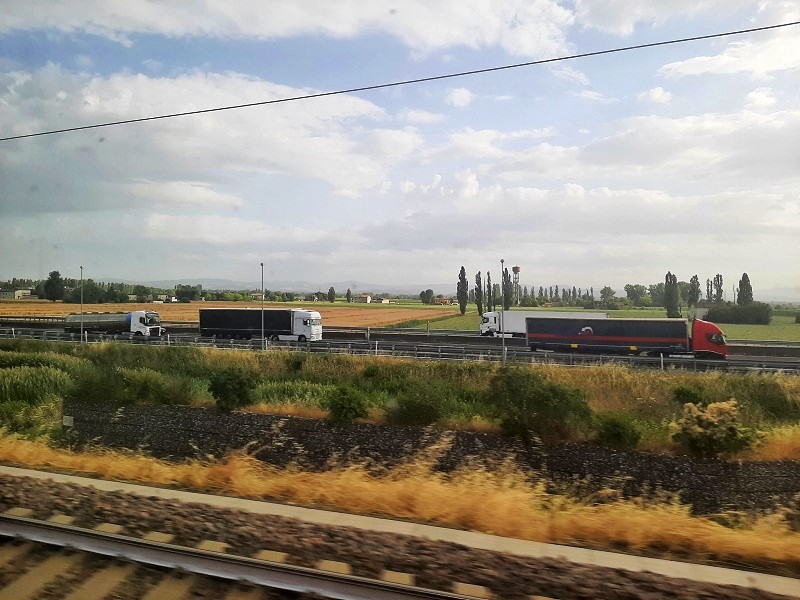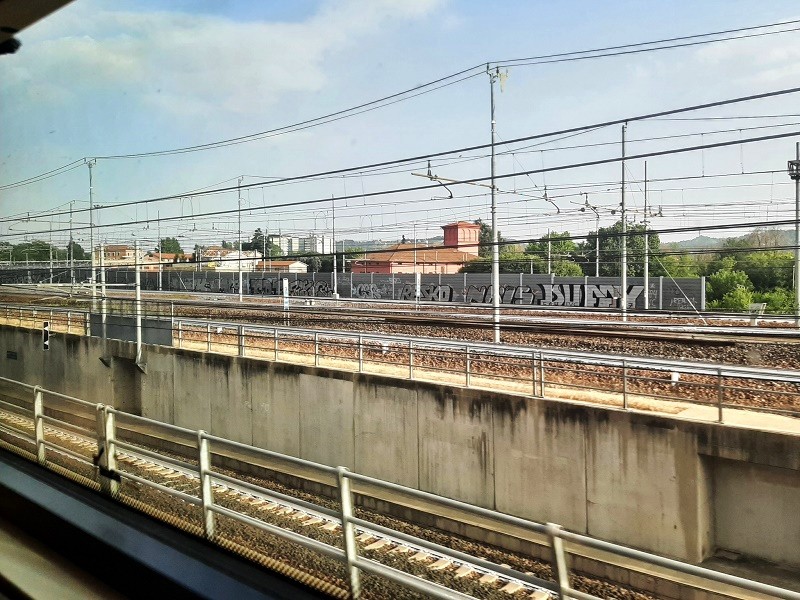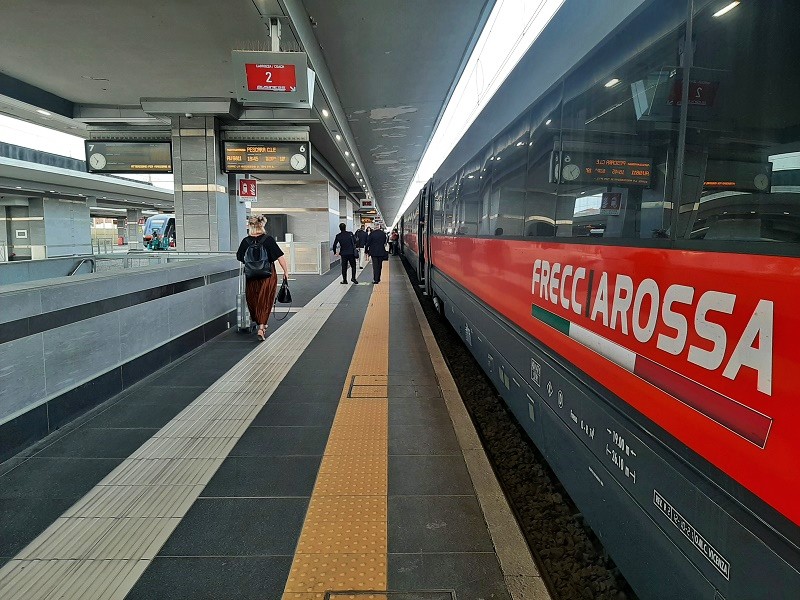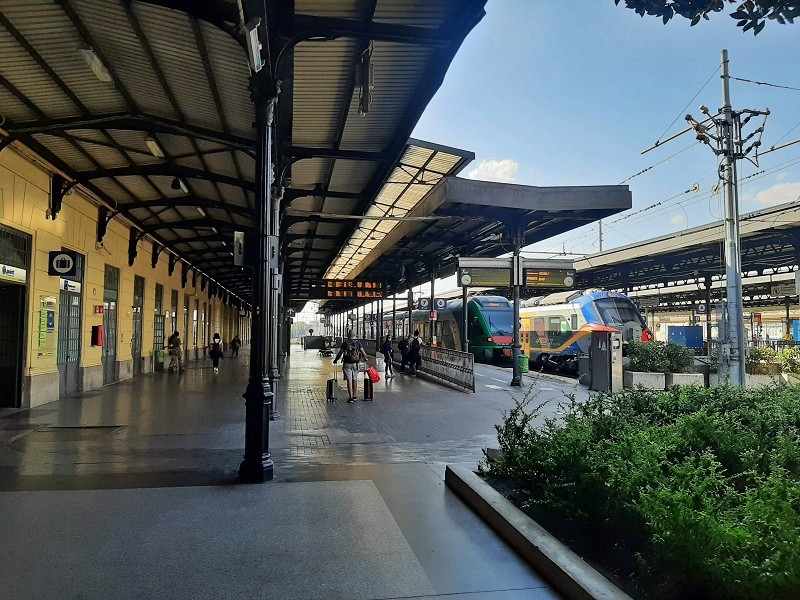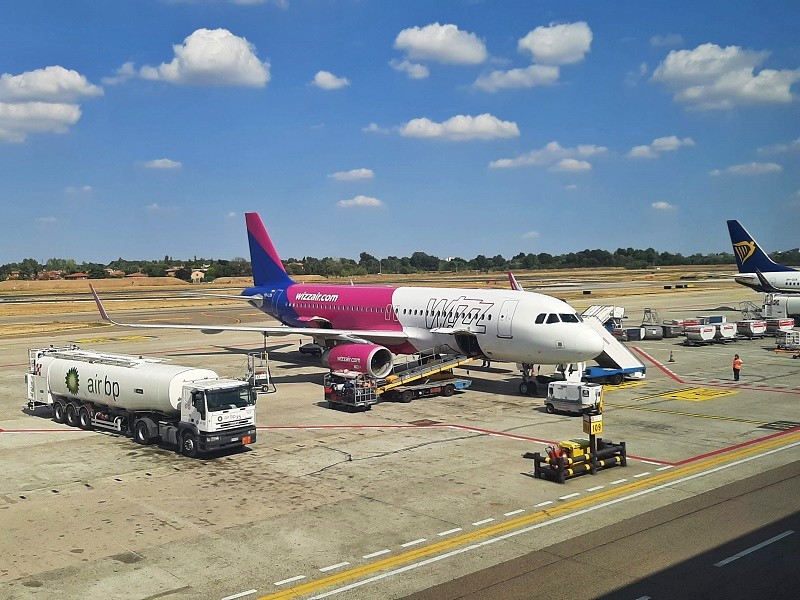Review: Trenitalia Frecciarossa High-Speed Train Milan to Bologna
This review details my journey from Milan to Bologna on a Trenitalia ‘Frecciarossa’ high-speed train.
By train to Milan and Bologna
After a lovely couple of hours on the shores of Lake Maggiore in Stresa, it was time to continue my train journey through Italy.
Sadly, my holiday based around the scenic trains of Switzerland and the North Italian lakes had come to an end, and all that was left was a trip down to Bologna, from where my flight home would depart.
To travel from Stresa to Bologna, I would first take a regional train to Milan, where I would then connect to a Frecciarossa high-speed train to Bologna.
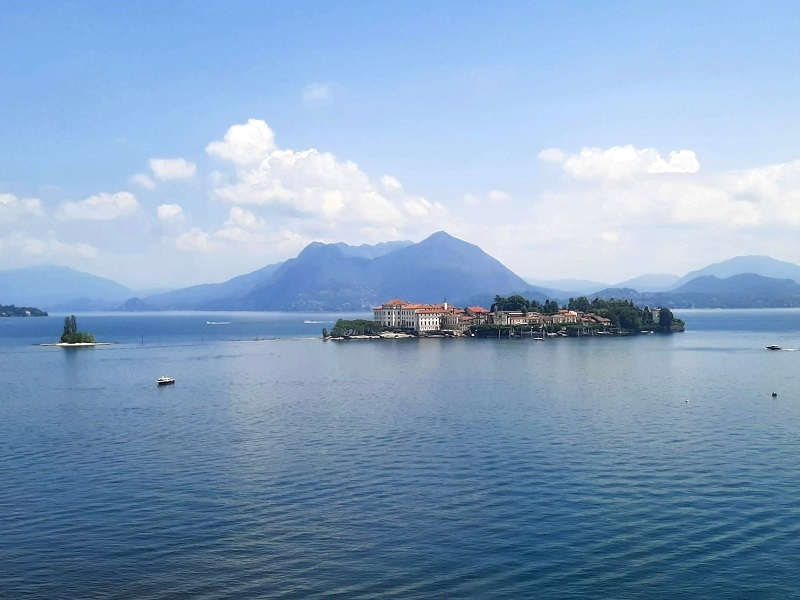
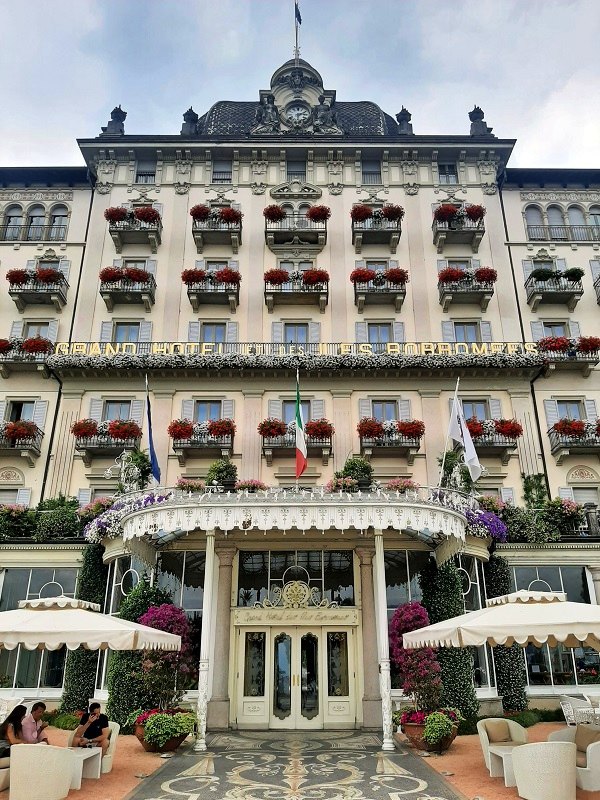
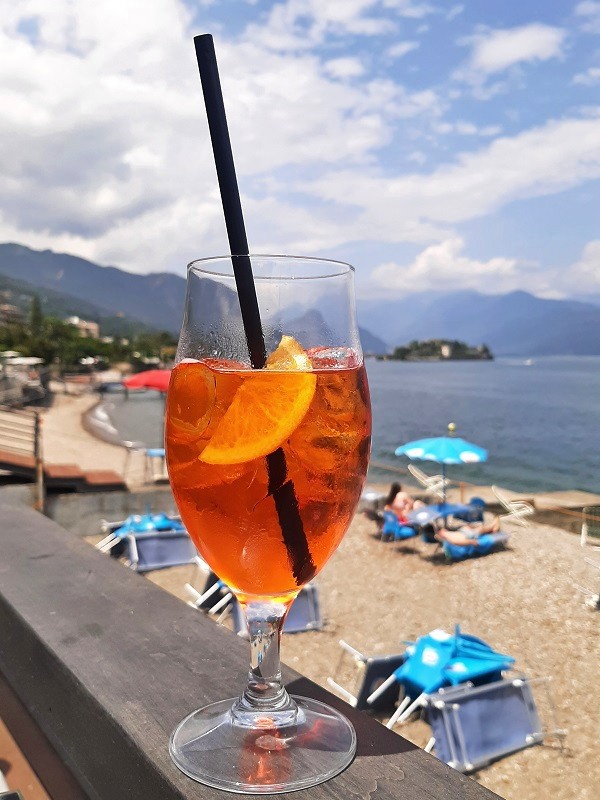
The route
In total, 300 kilometres of rail travel lay ahead of me today.
Although the first part of the journey would take me along the shores of Lake Maggiore, I knew the remainder would not offer the most exciting scenery, as the Po Valley, which dominates this part of northern Italy, is as flat as a pancake.
That said, I was still excited to travel, as a high-speed train journey is always enjoyable, even though I’ve travelled on Trenitalia’s Frecciarossa trains many times before.

Stresa to Milano Centrale by Train
Train RE 2431 – Departure: 3.23pm – Arrival: 4.35pm
Duration: 1h12m – Distance: 85 kilometres
On board the Milan to Stresa train
After a short wait at the railway station of Stresa, my train to Milan arrived at the platform, having commenced its journey 20 minutes earlier at its starting point in Domodossola.
These smart-looking double-deck regional trains, operated by Trenord and manufactured by Hitachi, provide ample seating and modern facilities.
Travelling with an Interrail pass in hand meant I could simply hop on the train, as seat reservations are neither required, nor possible in the first place.
Knowing that the railway line would hug the western shore of Lake Maggiore, I took an empty seat on the left-hand side of the train in the direction of travel to enjoy the best views.
Indeed, for the first part of the journey — roughly between Stresa and Sesto Calende — the views from the train across the lake and the hilly landscape are wonderful.
A few minutes before the train stops at the station of Arona, be sure to look out across the lake and try to spot the castle of Rocca di Angera on the opposite shore.
Once the train reaches Gallarate, one of the main stops on this regional route, the lovely lakeside scenery has long since given way to the towns and suburbs of the greater Milan urban area, Italy’s economic heartland.
After stops at Busto Arsizio and Rho-Fiera Milano, Milan’s trade fair and exhibition centre, we finally approached the massive railway statin of Milano Centrale.
As your train approaches Milano Centrale, be sure to look out for the large, disused signal boxes above the railway tracks, which are nearly a century old!
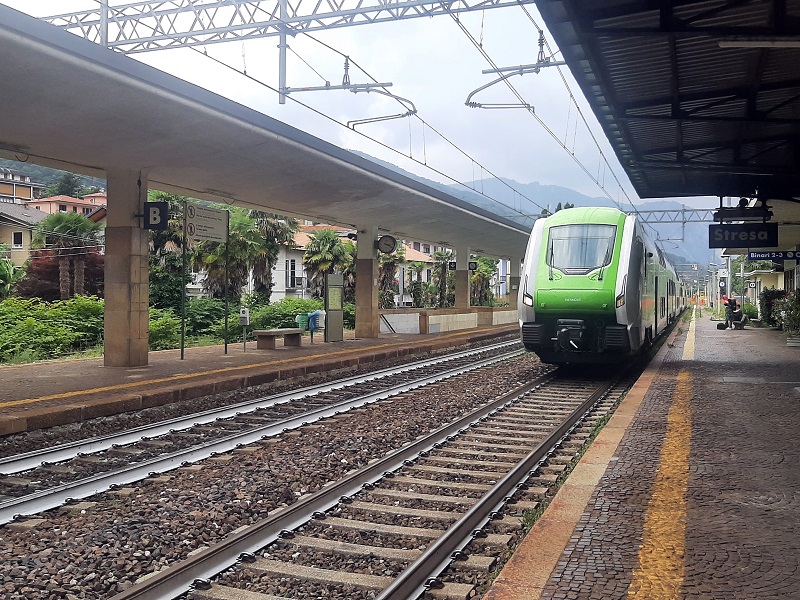
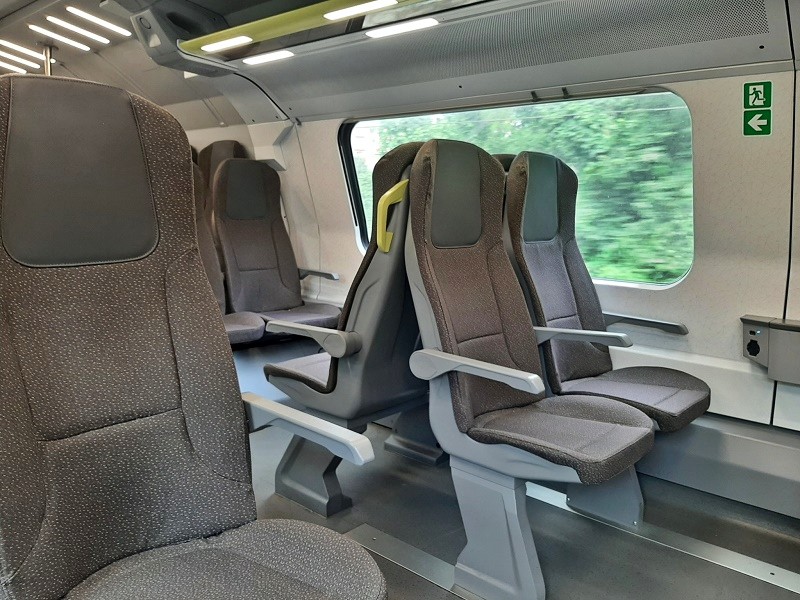



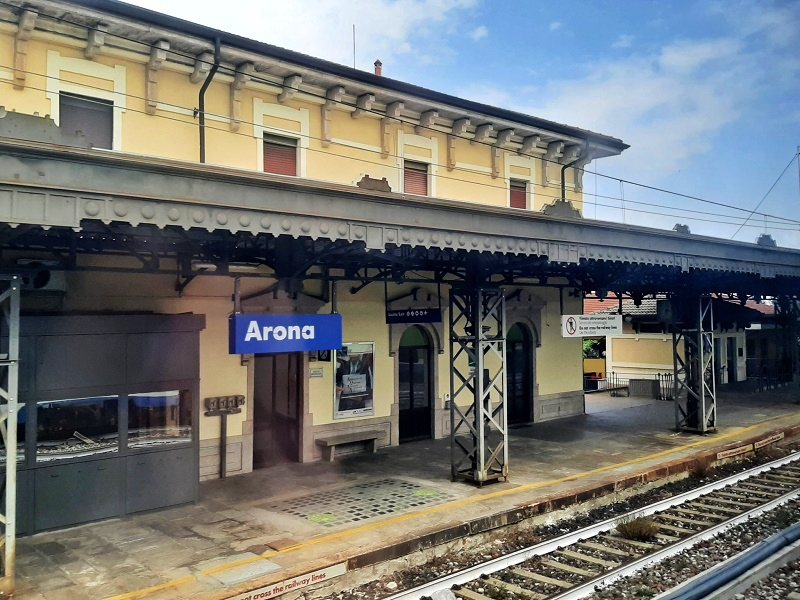


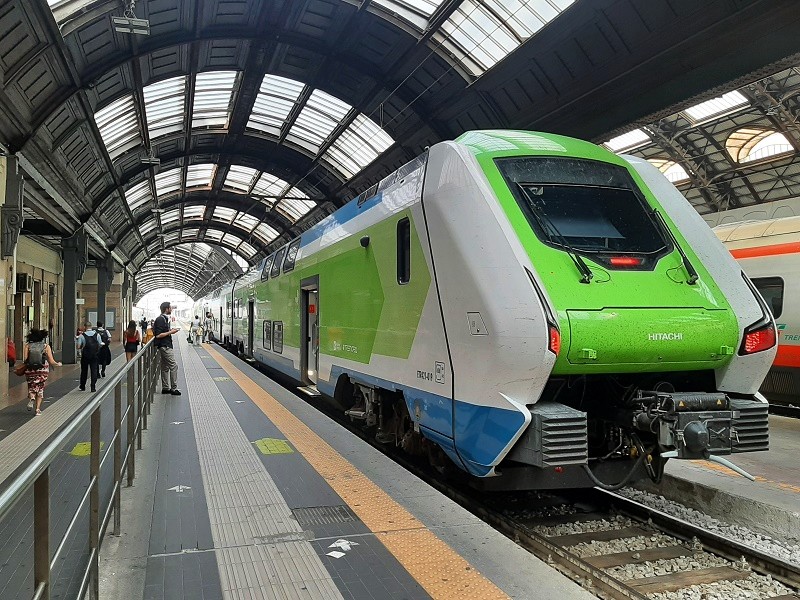
Milano Centrale
No matter whether it’s your first time arriving there or your 100th time passing through, Milano Centrale, Milan’s central railway station, never fails to impress.
Although Europe boasts many impressive train stations, few are built on as grand a scale as Milan’s central station.
Even though the railway station looks impressive enough when standing on the platform beneath the vast train shed, Milano Centrale’s most stunning features, in my opinion, are its grand staircases, which lead from the elevated platform level down to the magnificent façade at street level.
If it’s your first time departing from Milan’s central railway station, be sure to allow plenty of time, not only to admire its beauty but also to navigate your way to your train.
It certainly felt good to be back at Milan’s beautiful railway station, even though I have visited many times before, including at the start of this trip when I travelled by train rom Bergamo to Varenna.

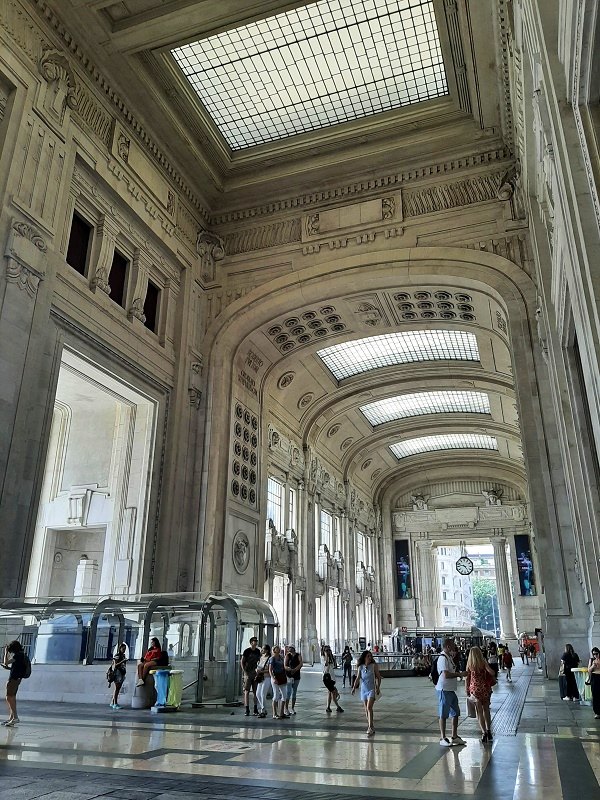
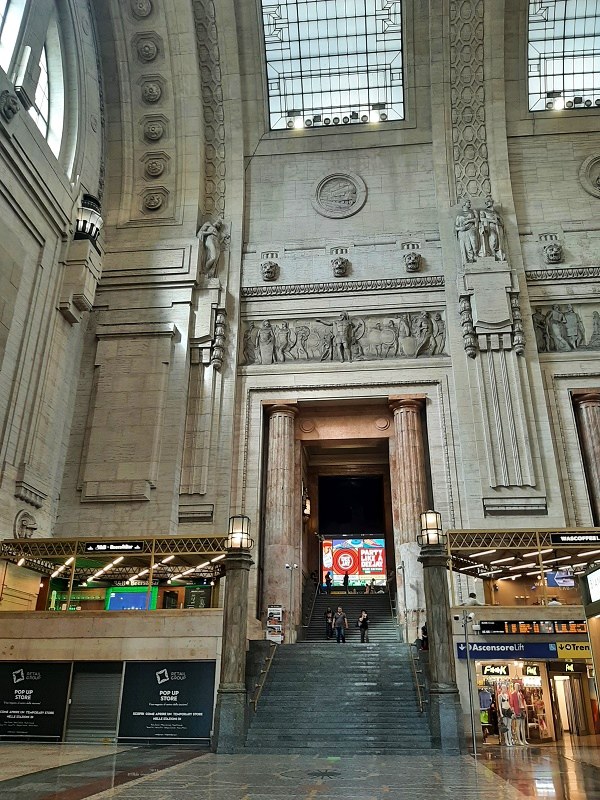




Booking the train from Milan to Bologna
If you want to travel from Milan to Bologna by train, you can either take a Frecciarossa high-speed train operated by Italy’s national railway company Trenitalia or a high-speed train operated by the privately owned rival, Italo.
The high-speed trains of Trenitalia and Italo are highly comparable in terms of comfort, speed, and travel duration, so it’s best to simply choose the company offering the best price or the departure that best fits your schedule.
Italian high-speed trains, whether Trenitalia or Italo, are cheapest when booked well in advance, so it’s advisable to do so a few weeks or months ahead if you can.
Alternatively, Trenitalia also operates conventional InterCity trains between Milan and Bologna, as well as slower regional trains, and although these take much longer, they are often cheaper.
Interrail and Eurail passes are valid on Trenitalia’s Frecciarossa high-speed trains, although it is compulsory to make a seat reservation for passholders, which costs €13.
Interrail and Eurail passholders can best make seat reservations for Italian trains online at Rail Europe or, oddly enough, through the website of ÖBB, the Austrian Railways, as this cannot be done on Trenitalia’s own website.
Although you can make seat reservations at the station in Italy, there is always a slight risk that the train you want to board may already be fully booked.
However, if you’re flexible, this shouldn’t be an issue given the frequent departures on the main Italian high-speed railway axis from Milan to Bologna, Florence, and Rome.

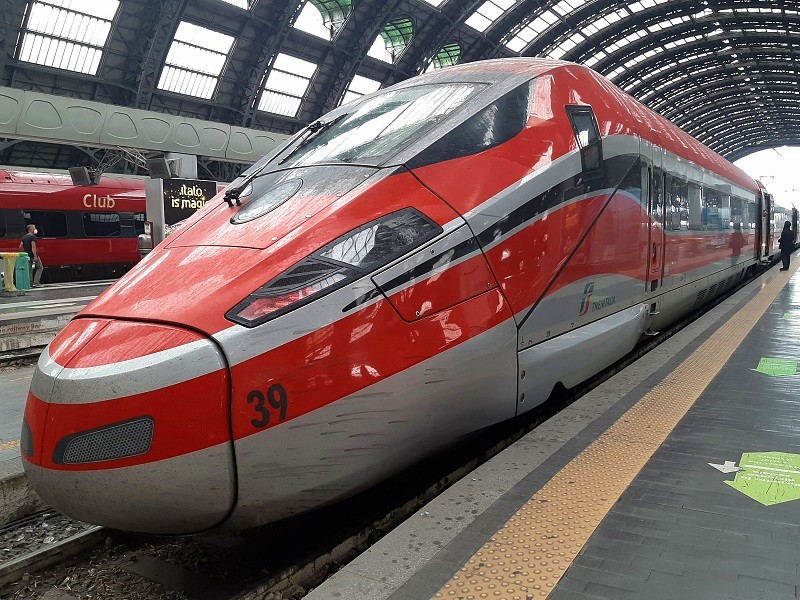
Boarding the train
Before you can reach the departure platforms of Milan’s central railway station, you first need to scan the barcode or QR code of your ticket at the entrance gates to open the barriers, although this is of course not required if you are connecting and arrive by train at one of the platforms.
The Frecciarossa, meaning “red arrow,” is the high-speed train brand of Trenitalia, and you can certainly see why it’s named like this by looking at the bright red colours of the train.
Note that Frecciarossa doesn’t refer to a specific train type, as the exact train operating your service depends on the route and departure.
My Frecciarossa high-speed train service from Milan to Bologna was operated by an ETR 500, made by Italian manufacturer AnsaldoBreda, which can reach an operational top speed of 300 kilometres per hour (190 mph).
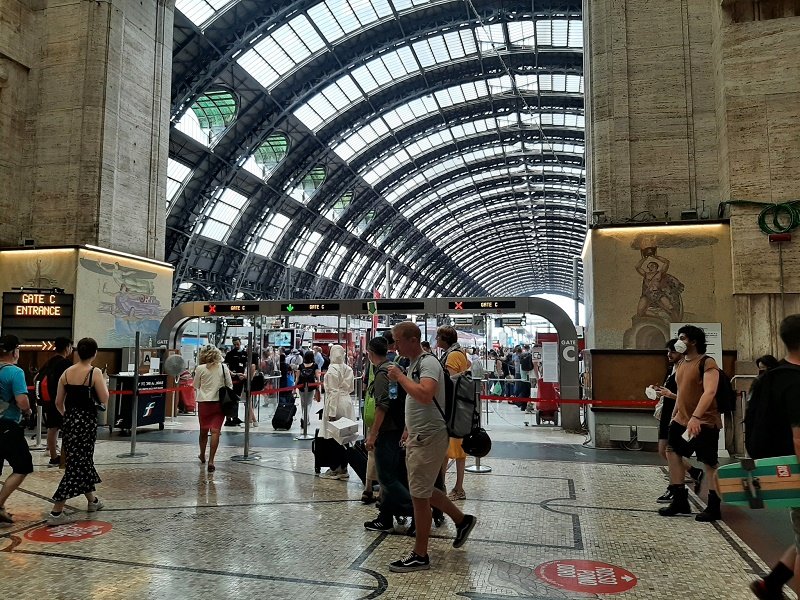
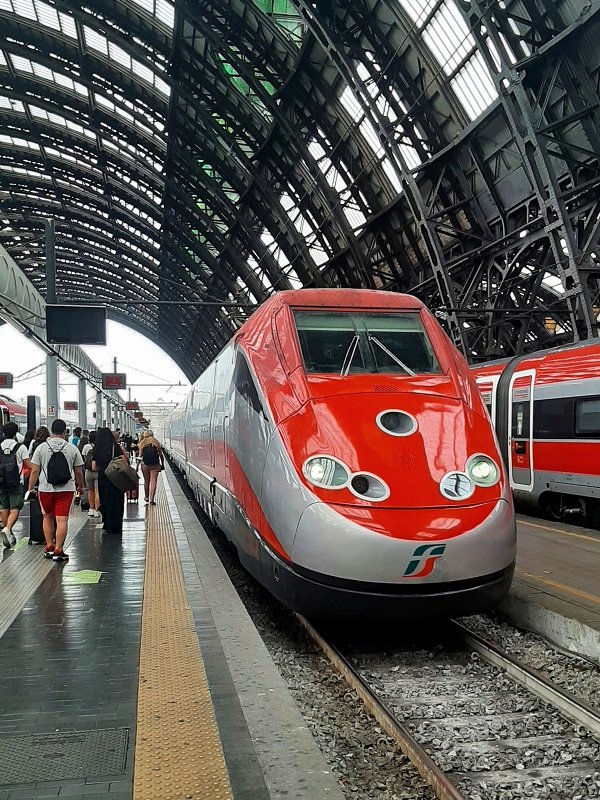
On board the Frecciarossa high-speed train
On the Frecciarossa high-speed train in Italy, there are up to four different travel classes:
– Standard
– Premium
– Business
– Executive
Standard class on the Frecciarossa high-speed train is similar to regular 2nd class and features seats arranged in a 2+2 configuration, typically in bays of four seats around a central table or as two-abreast seats.
Premium denotes premium 2nd class, and although the seat configuration is the same with an identical seat pitch and shoulder room, you receive a complimentary welcome drink (soft drink or coffee).
Another added benefit of Premium class over Standard class is that on ETR 500 high-speed trains, Premium class features leather seats while Standard class has cloth fabric seats, although on all other high-speed train types (ETR 600, 700, 1000) both Premium and Standard class have leather seats.
Business class on the Frecciarossa high-speed train is similar to first class, with seats in a 2+1 configuration, centred around a table in bays of four, as duo seats opposite each other, two-abreast, or as solo seats.
In business class, you receive a complimentary welcome drink (soft drink, coffee, or prosecco), some water, and a sweet or savoury snack.
Executive class, a premium first class, is perhaps the most luxurious way to travel by train not only in Italy, but across all of Europe.
All seats in executive class are large leather chairs in a 1+1 configuration, with drinks, snacks, and light meals of your choice from a special menu included in the fare, along with access to the FrecciaClub first class lounge at select stations in Italy.
No matter your travel class, you’ll always find a power socket at your seat on board a Frecciarossa high-speed train, along with Wi-Fi internet.
You’ll also find a dining car on Frecciarossa high-speed trains, where you can buy drinks, snacks, or light meals, though it functions more like a bar-bistro counter with high-top tables and a few bar stools instead of a proper sit-down service.
At both ends of each train carriage, you’ll find luggage racks for larger suitcases and backpacks, although most people simply store their bags by placing them in the storage space between the seatbacks or on the overhead racks above the seats to keep them close by.
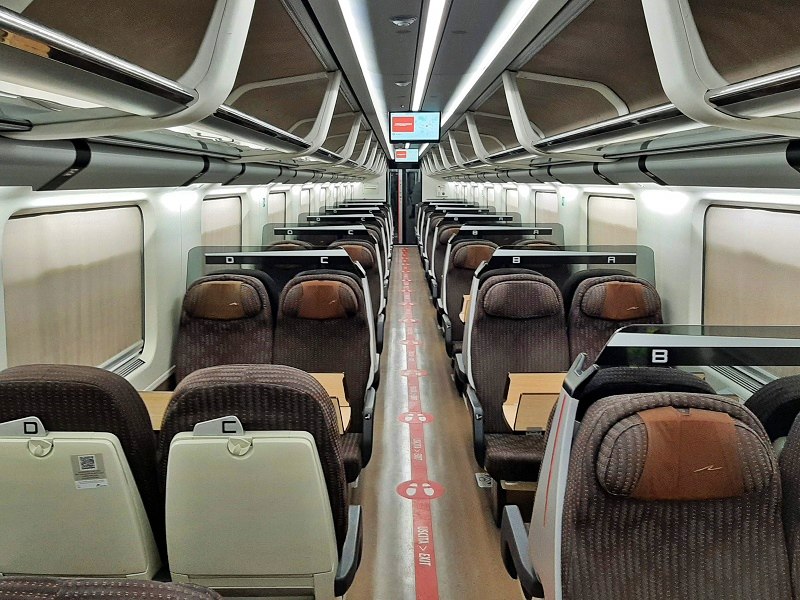

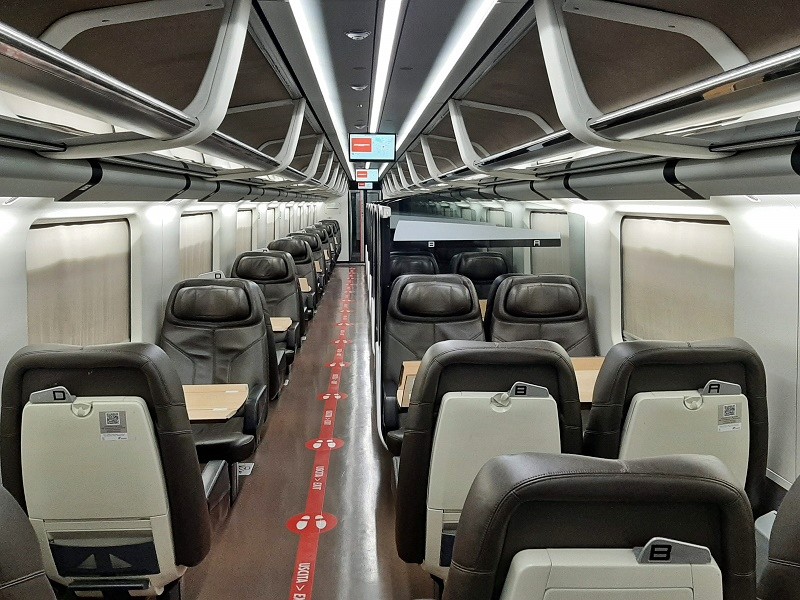

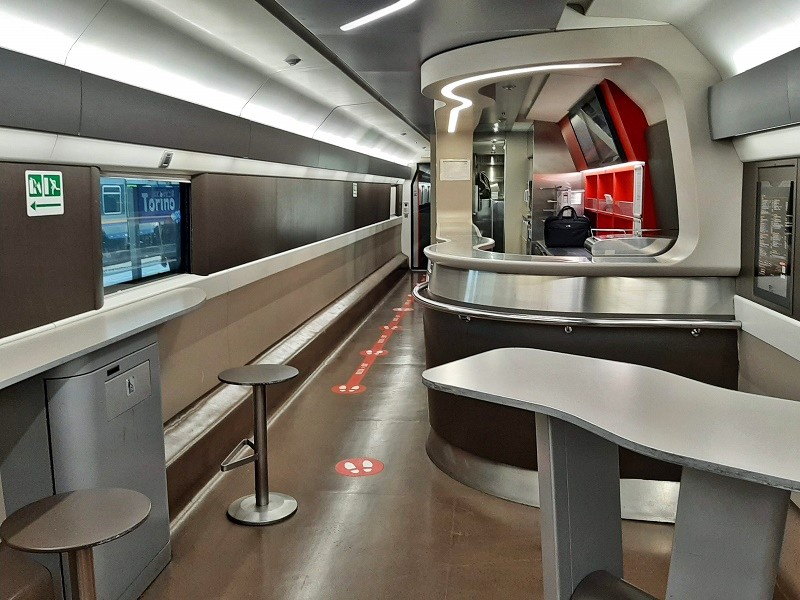
Milano Centrale to Bologna Centrale by Train
Train FR 9811 – Departure: 5.30pm – Arrival: 6.42pm
Duration: 1h12m – Distance: 215 kilometres
Departure from Milan
As I had a first-class Interrail pass, I was able to travel in Business class on the Frecciarossa high-speed train from Milan to Bologna.
My train was a Milan to Pescara service, stopping along the way in Reggio Emilia, Bologna, Forlì, Rimini, Pesaro, Ancona, and San Benedetto del Tronto.
It would take 1 hour and 12 minutes for my train to cover the 215 kilometres between Milan and Bologna, although some services shave a couple of minutes off the total duration by omitting the stop in Reggio Emilia and running non-stop between Milan and Bologna.
As the train leaves Milan, passing secondary stations like Milan Rogoredo, the speeds remain relatively slow, but once the Frecciarossa hits the dedicated high-speed line to Bologna, it accelerates to its top speed.
The tray tables at each seat are firm and perfect for holding your laptop to work, although I simply used mine to place a can of beer and a cannoli I had bought earlier at the station to enjoy during the ride.
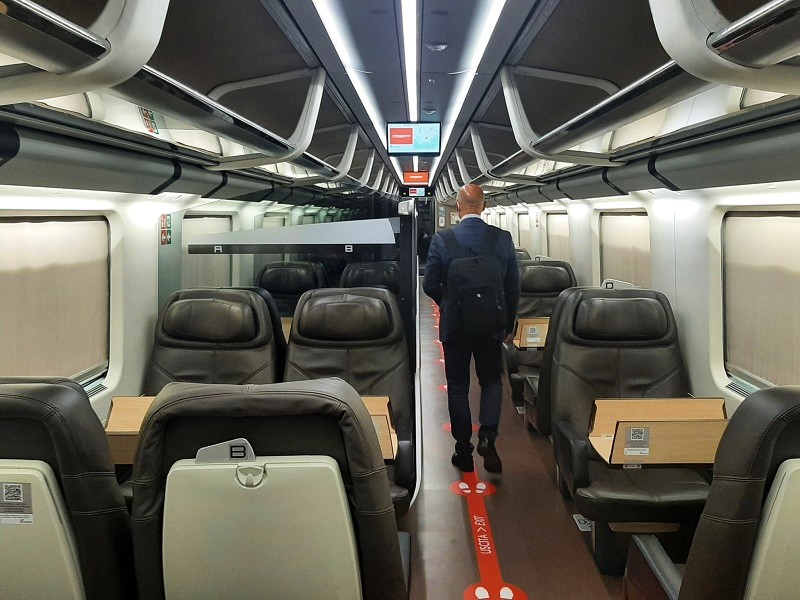

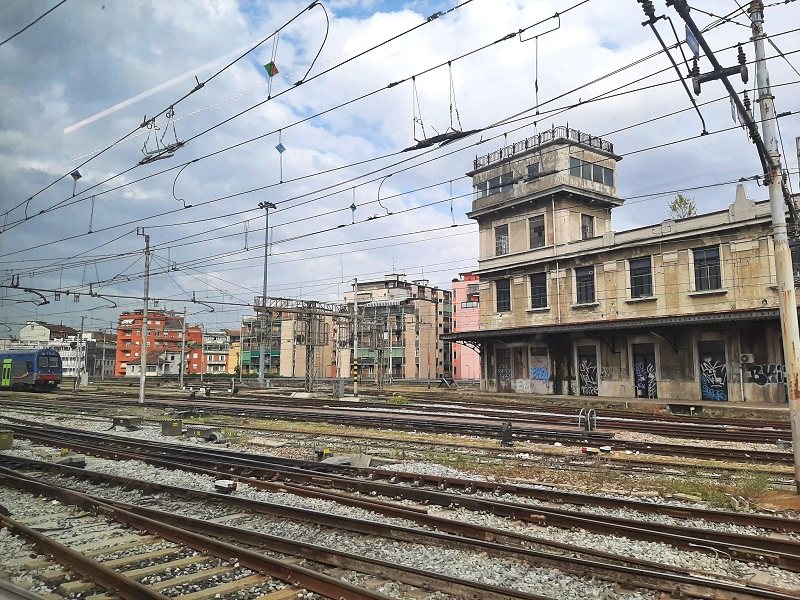
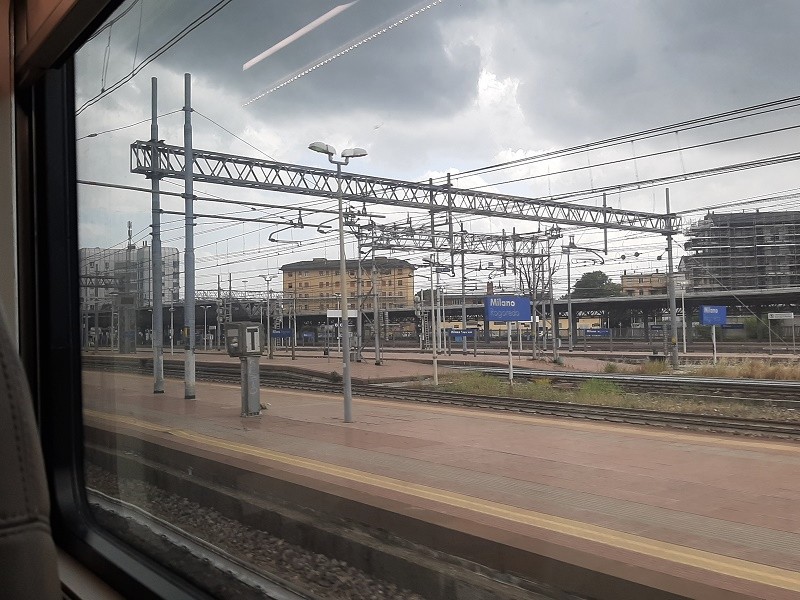
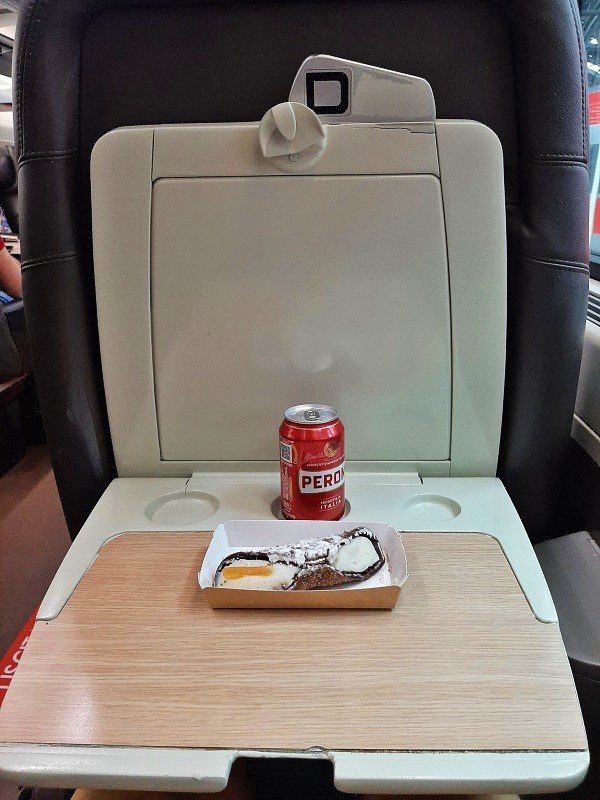
On-board service
In Business class on the Frecciarossa high-speed train, the fare includes a free drink, water, and a small snack.
You can choose between a sweet or savoury snack, and for the beverage, you can select coffee, a soft drink, or a small bottle of prosecco.
I usually skip the coffee as it reminds me of bad-quality airplane coffee, so if you’re after proper Italian espresso, head to the bar on the Frecciarossa train instead — even if you have to pay for your coffee here, it will be miles better in taste.
Instead, I of course went for the complimentary bottle of Prosecco and some nuts, which is certainly a nice little perk when travelling in business class on a Frecciarossa train.
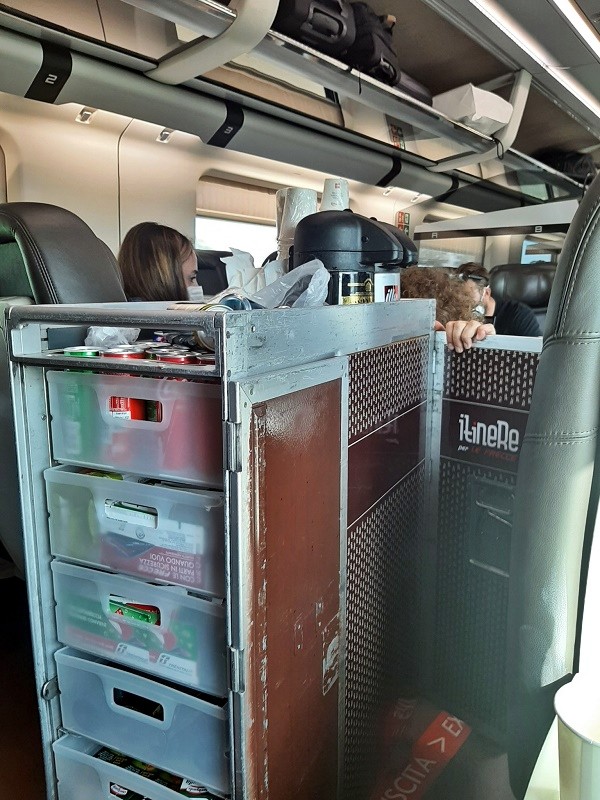
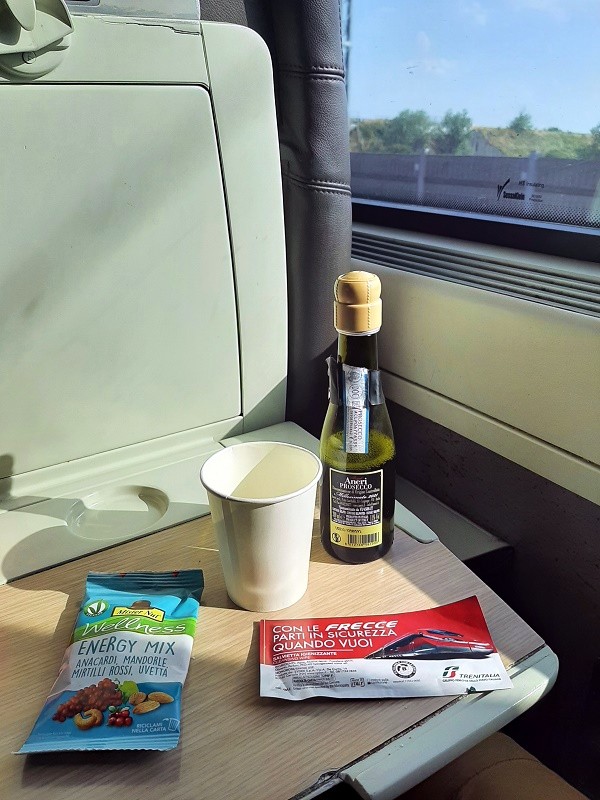
This article is part of the ‘Scenic Trains Around Switzerland and the Italian Lakes‘ trip report, which consists of the following chapters:
1. Bergamo: A Visit to Lombardy’s Beautiful Hilltop Town
2. Travelling From Bergamo to Milan by Train
3. From Milan to Varenna and Tirano By Trenord Regional Train
4. A Varenna Visit: A Day Trip to Lake Como’s Most Beautiful Town
5. Tirano: The Italian Gateway to the Bernina Railway
6. Bernina Express Train: Guide to Switzerland’s Most Scenic Railway
7. Review: Swiss InterCity (IC) Train Chur to Zurich and Basel
8. From Zurich to Geneva on a Swiss ICN Tilting Train
9. Cheap Geneva Hotel: Stay Across the Border in Annemasse!
10. Around Lake Geneva by Train: From Geneva to Montreux
11. A Visit to Montreux and the Freddie Mercury Statue
12. Golden Pass: Guide to a Scenic Railway Route Across Switzerland
13. Swiss Chique: The MOB GoldenPass Belle Époque Train
14. From the Mountains to the Lake: Zweisimmen to Spiez by Train
15. Spectacular Spiez: A Visit to a Scenic Swiss Town
16. Spiez to Interlaken by Train: A Trip on the Lake Thun Railway Line
17. Review: Interlaken to Lucerne by Zentralbahn Train
18. Lucerne: Exploring One of Switzerland’s Most Beautiful Cities
19. From Lucerne to Locarno: By Train Across the Gotthard
20. A Visit to Locarno and the Sanctuary of Madonna del Sasso
21. Centovalli Railway: By Train From Locarno to Domodossola
22. Stresa: Grand Hotels, Lakeside Views, and the Borromean Islands
23. Review: Trenitalia Frecciarossa High-Speed Train Milan to Bologna (current chapter)

